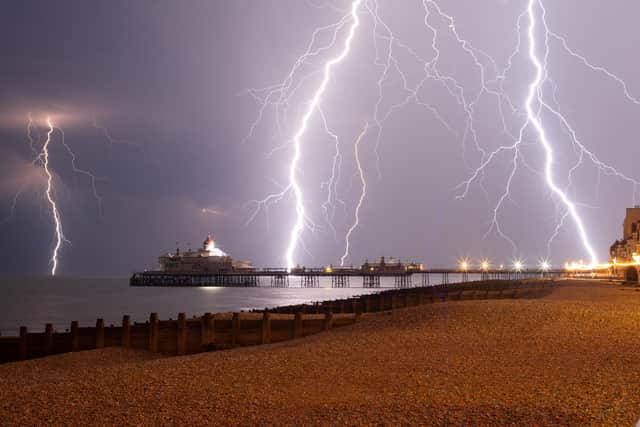What is thundersnow and why does it happen? Where and when UK will be hit by snow, sleet, hail and lightning
This article contains affiliate links. We may earn a small commission on items purchased through this article, but that does not affect our editorial judgement.
and live on Freeview channel 276
This winter has seen some major storms buffet the UK, with Storm Arwen and Storm Barra both causing extensive damage.
But, while there was a white Christmas for many, most of the UK has had a bit of respite from severe, stormy weather over the New Year period.
Advertisement
Hide AdAdvertisement
Hide AdIn its place, there has been widespread rain and cloud cover.
Now, the Met Office is forecasting the UK will face severe weather conditions, including thundersnow, on Friday (7 January).
So what exactly is thundersnow - and where in the UK will it hit?
Here’s what you need to know.


Where will severe weather hit the UK today?
The Met Office has two yellow warnings for snow and ice in force over much of the UK.
Advertisement
Hide AdAdvertisement
Hide AdMost of Scotland and Northern Ireland, as well as the North West of England, have been covered by the warnings.
Frequent sleet, hail and up to 10cm of snow are anticipated until around midday on Friday.
Along with icy patches on untreated roads, the Met Office said these conditions could lead to travel disruption.
The forecaster also warned there was a risk some power lines could come down, mobile signal coverage could be affected and that some rural communities could be cut off.
Advertisement
Hide AdAdvertisement
Hide AdThese weather conditions could also give rise to thundersnow in some areas of Western Scotland - a weather event rarely seen in the UK.


What is the weather forecast for other parts of the UK?
Most other regions of the UK are in store for cold, dry conditions - although heavy rainfall has been predicted for the South West and southern Wales.
Showers could fall in the Midlands as the day goes on, while tonight is predicted to be clear across almost the entirety of the UK.
Temperatures will be close to freezing, particularly in the East of England and Scotland.
Advertisement
Hide AdAdvertisement
Hide AdSaturday (8 January) will see a front of heavy rain sweep across the whole of the UK for much of the morning.


What is thundersnow?
Thundersnow is basically what it says on the tin - a combination of both a thunderstorm and heavy snow.
Unlike a typical thunderstorm, you might struggle to see any lightning because the snowfall tends to obscure it.
And the thunder can only typically be heard within two to three miles of a lightning strike because the snow dampens the noise.
Advertisement
Hide AdAdvertisement
Hide AdThese factors, as well as the UK not typically being a snowy country, make thundersnow a rare phenomenon.
But it is brought about in exactly the same way as thunderstorms are in the summer.
It’s borne out of the difference in temperature between the ground and the air surrounding it.
Warm air near ground level rises quickly into colder air above it, creating the conditions for thunder and lightning.
Advertisement
Hide AdAdvertisement
Hide AdAnd just like a thunderstorm in the summer months, these conditions can cause heavy downpours - albeit of snow - and hail.
A message from the editor:
Thank you for reading. NationalWorld is a new national news brand, produced by a team of journalists, editors, video producers and designers who live and work across the UK. Find out more about who’s who in the team, and our editorial values. We want to start a community among our readers, so please follow us on Facebook, Twitter and Instagram, and keep the conversation going. You can also sign up to our email newsletters and get a curated selection of our best reads to your inbox every day.
Comment Guidelines
National World encourages reader discussion on our stories. User feedback, insights and back-and-forth exchanges add a rich layer of context to reporting. Please review our Community Guidelines before commenting.
